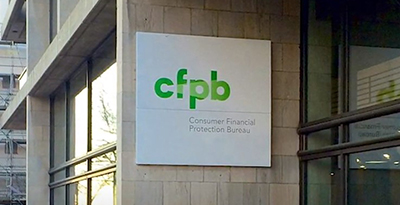
CFPB Proposes New PACE Financing Rules

The Consumer Financial Protection Bureau on Monday proposed a rule to implement a congressional mandate to establish consumer protections for residential Property Assessed Clean Energy (PACE) loans.
PACE loans, secured by a property tax lien on the borrower’s home, are often promoted as a way to finance clean energy improvements such as solar panels. The proposed rule would require lenders to assess a borrower’s ability to repay a PACE loan and would provide a framework for how these loans will be treated under the Truth in Lending Act. The CFPB also published a report on residential PACE loans, which found that the loans cause an increase in borrowers falling behind on their mortgage payments, along with other negative credit outcomes.
“When unscrupulous companies bait homeowners into unaffordable loans with exaggerated promises of energy bill savings, this can lead to serious financial distress,” said CFPB Director Rohit Chopra. “We are proposing new rules that would require sensible safeguards on these clean energy loans.”
The Mortgage Bankers Association has long-asserted that PACE loans upend traditional lien priority, exposing investors and guarantors to increased loss severities. “MBA is concerned about both lien priority AND consumer protection issues,” said Pete Mills, MBA Senior Vice President of Residential Policy and Member Services. “PACE obligations are voluntary liens secured by real property – consequently, they should be considered mortgages for purposes of consumer protection rules like Reg Z, ATR, TRID and SAFE Act, and they should respect proper lien priority principles – first in time, first in line.”
MBA supports—and Congress has enforced—a continued ban on PACE loans in housing programs offered through the GSEs, FHA and VA.
Mills said the proposed rule generally aligns with MBA’s core recommendation to cover PACE liens under Regulation Z and Ability-to-Repay rule. “This is directionally positive and important to finally have a formal rule out for comment,” he said.
MBA Vice President of State Government Affairs and Industry Relations William Kooper said the CFPB proposed rule addresses some—but not all—consumer protection concerns about PACE loans, noting the MBA-supported enactment of S.2155, the Economic Growth, Regulatory Relief and Consumer Protection Act by Congress in 2018 authorized the CFPB to issue rules to shield consumers from the well-documented dangers posed by PACE loans.
According to MBA, federal consumer protection regulations are needed because all PACE loans are not subject to appropriate, standardized consumer protections. “Without such federal standards, more states will continue to act independently and create unequal consumer protections,” MBA said.
Absent congressional action, two states—Ohio and Minnesota—have now subordinated PACE loans to mortgages. California was the first state to mandate consumer protections on PACE loans.
Residential PACE loans finance home improvements for borrowers, who pay back the loans through increased property tax payments over time. Eligible upgrades can include energy and water efficiency projects, or projects to prepare homes for natural disasters. From 2014-2020, a majority of PACE loans were for home improvements for natural disaster preparedness. The obligation of paying the loan back through higher property tax payments remains with the property even if the borrower sells the property; however, Mills said while borrowers are told by PACE salespeople that PACE liens transfer to a new buyer upon sale, in practice, many of those buyers insist the liens be paid off as a condition of their offer.
And although PACE lending is authorized by local governments, private companies typically administer the programs, which can include marketing of the loans, managing originations and making the lending decisions. “PACE lien interest rates are egregiously high when you consider that they have priority over first lien mortgages,” Mills said.
If finalized, the proposed rule would require PACE creditors and PACE companies to consider a consumer’s ability to repay when issuing a new PACE loan, and it would amend Regulation Z to address how the Truth in Lending Act applies to PACE transactions. Among other amendments, the proposed rule would adjust disclosure requirements to better fit PACE loans and to help consumers understand the loans’ impact on their property tax payments.
Public comments on the proposal are due by July 26, or 30 days after publication in the Federal Register, whichever is later.
The CFPB report on PACE loans highlights the impact these loans have on borrowers’ credit outcomes. The report focused on California and Florida as these are the two states where almost all PACE loan activity has occurred to date.
Some of the risks to consumers identified in the report include:
- Higher property taxes: PACE loans increased a homeowner’s property taxes by about $2,700 per year on average – an increase of about 88%.
- Higher interest rates: The average PACE loan had a 7.6% interest rate, which is much higher than average interest rates for home purchase or home equity loans.
- Increased mortgage delinquencies: In the two years following PACE loan origination, the mortgage delinquency rate for PACE loan borrowers with a pre-existing mortgage increased by 2.5 percentage points.
- Increased credit card balances: Consumers without a pre-existing mortgage increased their credit card balances in response to acquiring a PACE loan, perhaps accumulating credit card debt in order to make the PACE loan payments.
The report said PACE borrowers were more likely to reside in census tracts with higher percentages of Black and Hispanic residents relative to the average for their states. Reforms and regulation of PACE loans in California appear to have substantially reduced the volume of delinquencies compared to the trend in Florida over the same period.
